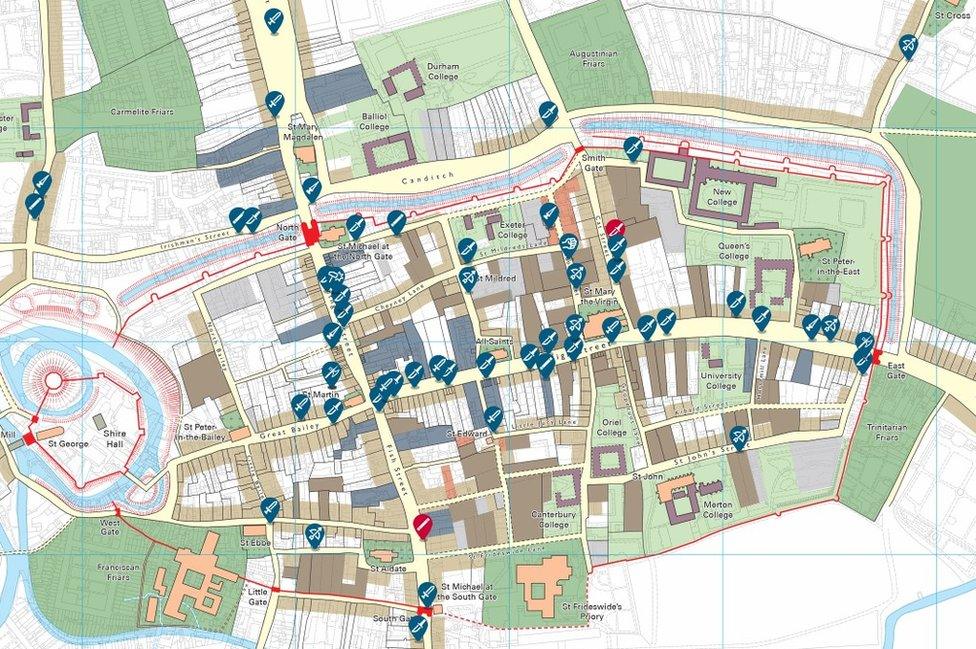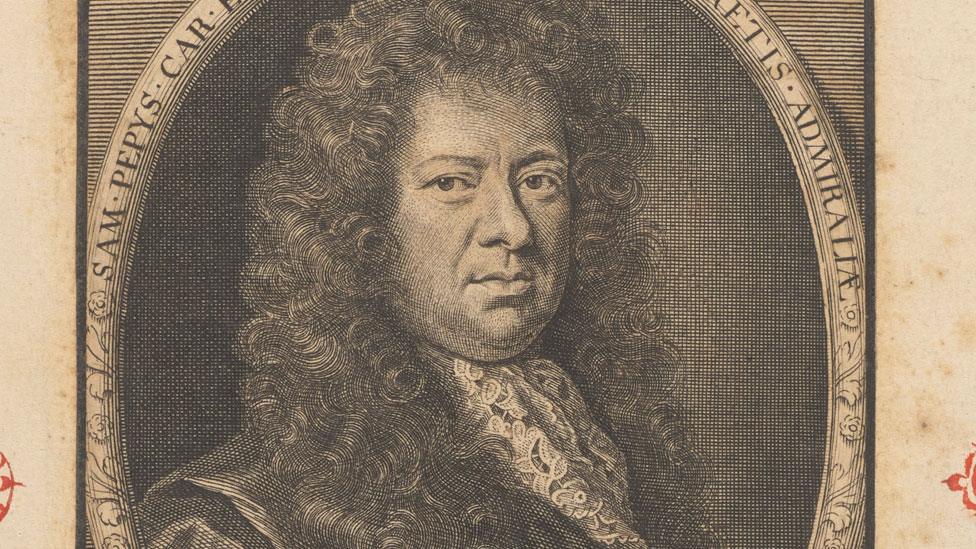Medieval Murder Maps plots historic killings
- Published

A murder map shows that Oxford students were murderous in Medieval times
Medieval Oxford had a murder rate 50 times higher than 21st Century English cities, new research has found.
The Medieval Murder Maps, assembled by Cambridge's Institute of Criminology, is a website plotting crimes based on 700-year-old coroners' inquests.
It launched in 2018 covering London, but has now expanded its reach to Oxford, external and York, external.
Professor Manuel Eisner said Oxford had a "deadly mix of conditions" which contributed to the high homicide rate.
He said the combination of young male students and alcohol was a "powder keg for violence".
The research covers a period when Oxford had about 7,000 inhabitants, about 1,500 of whom were students.
"Oxford students were all male and typically aged between 14 and 21, the peak for violence and risk-taking," Professor Eisner explained.


Oxford murder mayhem
1296 - A gang of students killed another student after he brought back a "harlot" to their school in the winter of 1296
1298 - An argument between students at a High Street tavern led to a mass street brawl with swords and battle-axes. The coroner said one student had "a mortal wound on the crown of his head, six inches long and in depth reaching to the brain"
1303 - A student was playing with a ball in the street when he was set upon by three Irish scholars who stabbed him in the face and throat
1324 - Students brutally attacked and killed a constable of the peace "with swords, bucklers and other arms" during a summer night

The institute estimates the per capita homicide rate in Oxford was four to five times higher than late medieval London or York.
Of the perpetrators, 75% were linked to the university in some way, as were 72% of the victims.
Meanwhile, many York cases centred around artisans in the same profession, such as fights between tannery workers or glove-makers.
At the time many men carried weaponry as part of everyday life, which increased the chance of arguments turning fatal.
Dr Stephanie Brown said: "Knives were omnipresent in medieval society. Axes were commonplace in homes for cutting wood, and many men carried a staff."
Professor Eisner said: "Circumstances that frequently led to violence will be familiar to us today - such as young men with group affiliations pursuing sex and alcohol during periods of leisure on the weekends.
"Weapons were never far away, and male honour had to be protected."
Follow BBC South on Facebook, external, Twitter, external, or Instagram, external. Send your story ideas to south.newsonline@bbc.co.uk, external.
- Published7 August 2023
